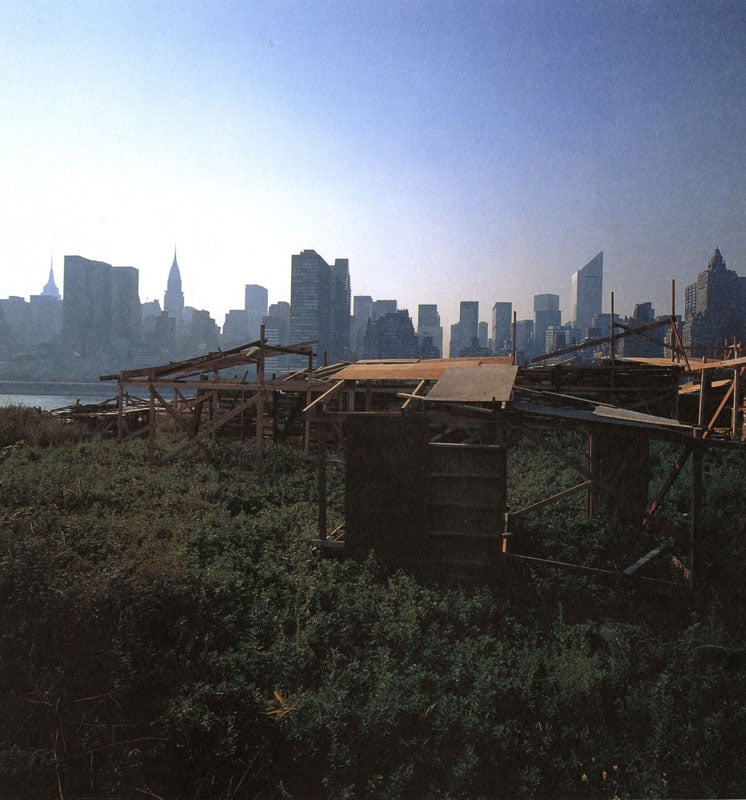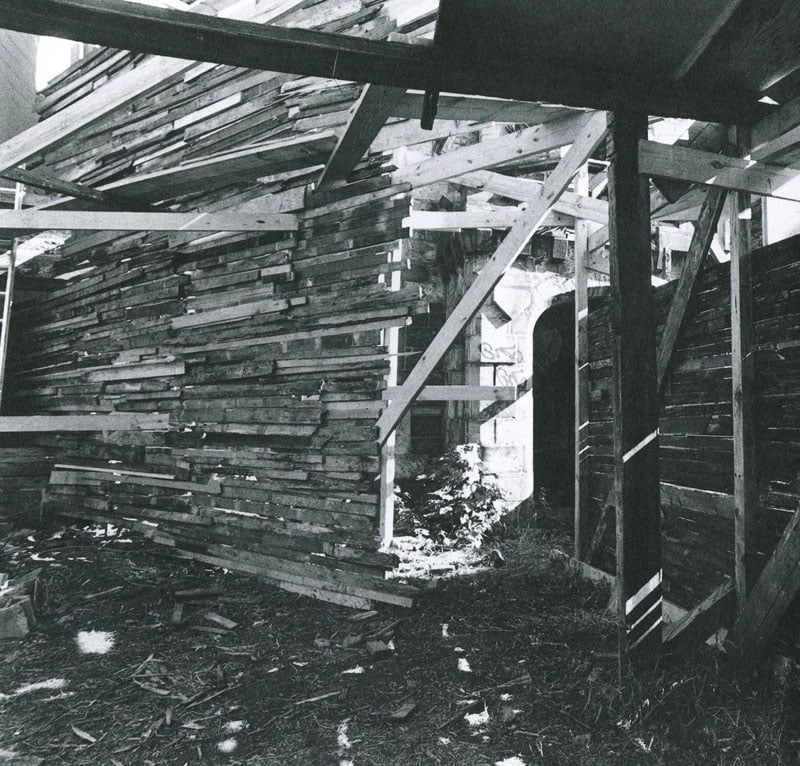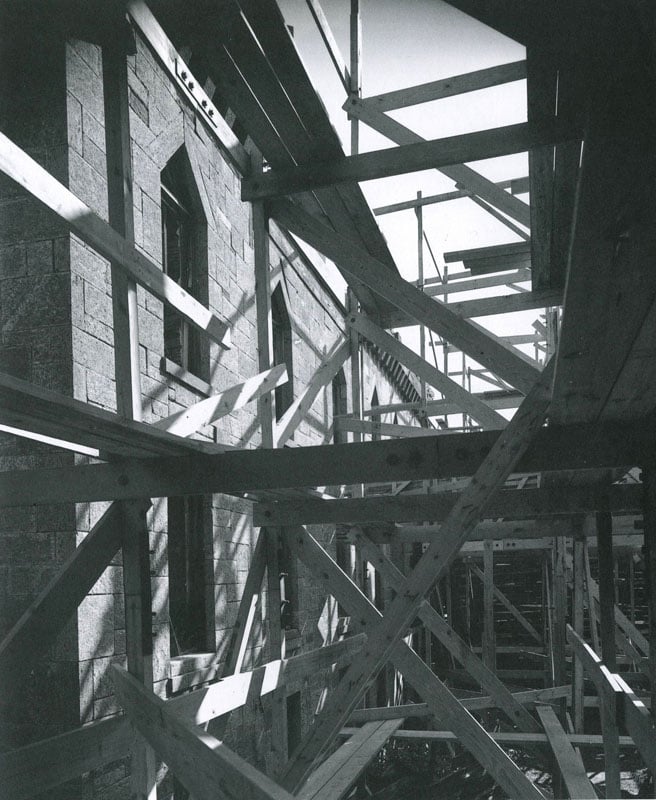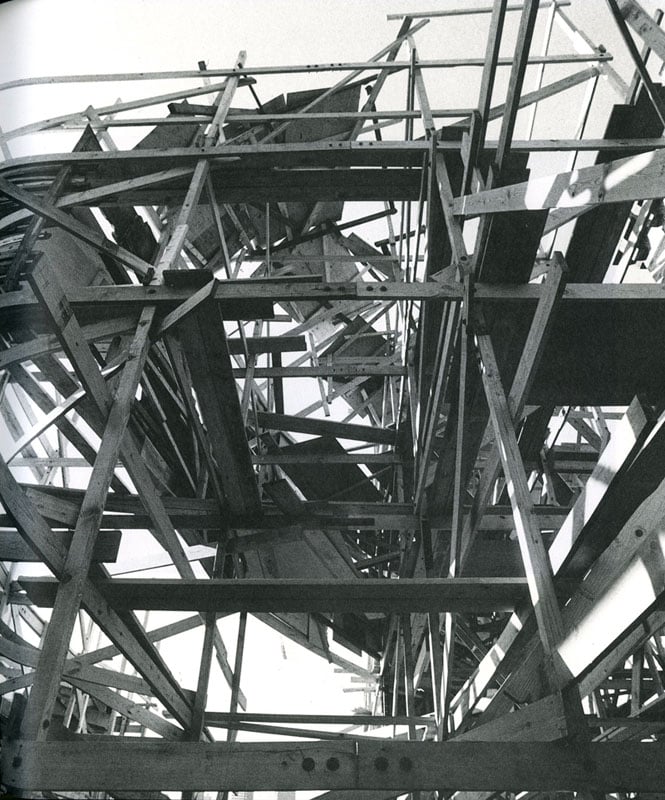Public Art at the Ruin!
From the months of July through December of 1992, a temporary public art installation by the Japanese artist Tadashi Kawamata was installed at the site of the Smallpox Hospital ruin. The installation was a constructed web of wooden beams that fully engulfed, but never touched, the landmark structure. Kawamata is well known for these types of installations at building sites and museums across the world. For this installation in particular, the individual beams and pieces of scrapwood that made up the web stood as symbols for the thousands of people who passed through not just the Smallpox Hospital, but the other medical institutions that once scattered the island.
Image from Kawamata Project on Roosevelt Island, Andrew Moore
In September of that year, the New York Times described the piece saying it “looks at first glance like a load of lumber dropped by a whirlwind. Made almost entirely of scrap wood gathered around Manhattan and Queens, it creeps around the ruins of the Smallpox Hospital, extending long wooden fingers into its gaping windows. In certain sections, the sculpture's wooden walls form mazelike passages. In others, the structure opens up and looks more like complex scaffolding. On the south side of the building, where the ground rises suddenly, the sculpture proliferates madly, completely enshrouding the brick wall, and small shacks are scattered here and there.”
Architectural rendering by Tadashi Kawamata
The project, led by curator Claudia Gould, took five years to bring to fruition. In 1992, Gould described the Ruin as “proud and poetic” and as a “silent but grand memorial to the social concerns of the era in which it was built.” Ms. Gould, in the project’s catalog titled Kawamata Project on Roosevelt Island, stated that “one can read the dark allegory of this romantic ruin in many ways: as a symbol of the dysfunctions of disease, city structures, or cultural ideals — a viewer’s choice there on an aggressive promontory in the middle of the East River.”






